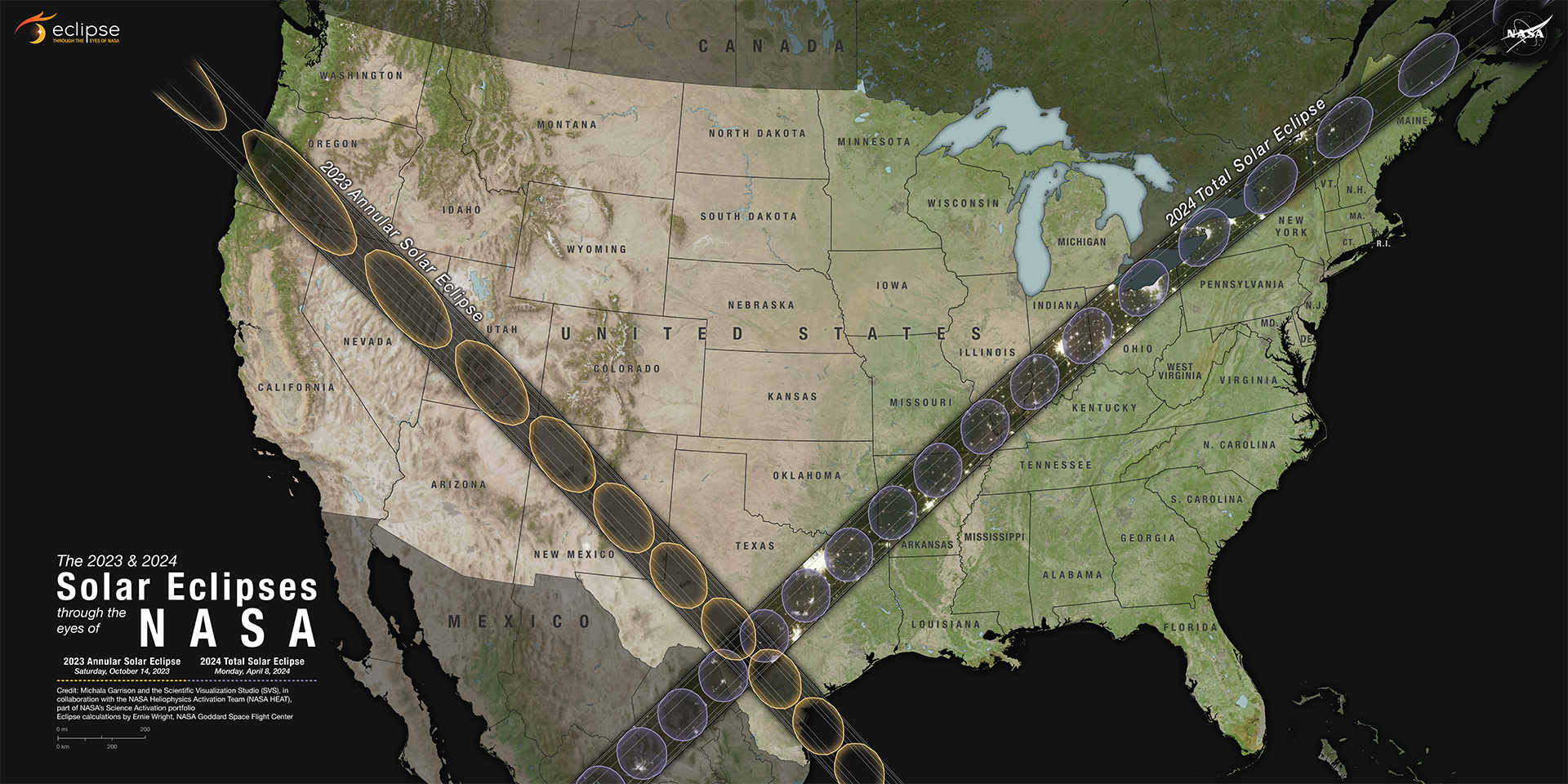Eclipse - Eclipse
GLOBE's Eyes on the 2023 and 2024 Eclipses

Figure 1: This map shows view of the paths of maximum eclipse and totality for the annular eclipse on 14 October 2023 and total solar eclipse on 8 April 2024. Additional maps and details are available on the eclipse landing page of the Scientific Visualization Studio. Image Credit: NASA's Scientific Visualization Studio
Did you know that nearly everything on Earth—you, your computer, all the plants and animals, even the weather—gets its energy from the Sun? The Earth is a solar-powered planet, meaning light from the Sun travels towards Earth where it is absorbed by the surface and reemitted in the form of heat radiation. This energy exchange is what keeps the planet warm and lets it support life.
So, what do you think would happen if you could dim or block out the Sun like you can a desk lamp? For those of you at the right time and place later in 2023 and 2024, nature is providing two exciting opportunities to do just that!
The Eclipse Path
On 14 October 2023, an annular solar eclipse will pass across North, Central and South America. The path of the maximum eclipse will begin over the Pacific Ocean, enter the United States in Oregon, and pass across multiple U.S. states before crossing the Yucatan Peninsula in Mexico, Belize, Honduras, Nicaragua, Costa Rica (off the coast), Panama, Colombia and Brazil. Then, seven months later on 08 April 2024, a total solar eclipse will again reach North America, with the path of totality starting in Mexico, crossing from Texas to Maine, and including parts of the Canadian provinces of Ontario, Quebec, New Brunswick, Prince Edward Island and Newfoundland and Labrador. These celestial events have inspired wonder and awe throughout human history.
If you’ve ever wanted to do an experiment where you could dim or turn off the Sun the way you can a desk lamp, nature is providing some upcoming opportunities. What solar powered protocols will you be watching?
Important: The only time it is safe to look directly at the Sun without eye protection is during the brief window of complete totality when the Sun’s disk is completely obscured by the Moon. At all other times, please be sure to view the eclipse through safe lenses, either through filters on a telescope or by using eclipse glasses. The Sun is never completely blocked by the Moon during an annular solar eclipse. Therefore, during an annular eclipse, it is never safe to look directly at the Sun without specialized eye protection designed for solar viewing. You can also use an indirect viewing method, such as a pinhole projector. For more information, please visit this NASA eclipse safety page.
Collect Data on the Eclipse with GLOBE Observer
GLOBE Eclipse is a temporary tool in The GLOBE Program's app, GLOBE Observer, that helps citizen scientists document air temperature and clouds during an eclipse. With the app, citizen scientists can:
- Observe how the eclipse changes local atmospheric conditions.
- Report surface conditions that may have an impact on differences in the atmospheric effects in varying locations.
- Contribute to a citizen science database used by scientists and students to study the effects of eclipses on the atmosphere.
- Provide comparison data even if they are not in the path of totality.
Learn more about collecting eclipse data with GLOBE Observer.





